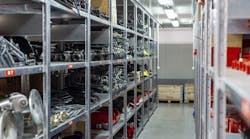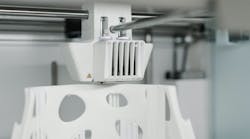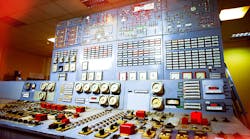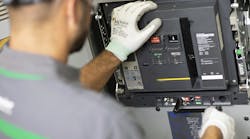Inappropriate obsolescence management can lead to part failure and unsafe working environments. Yet, it isn’t always considered a safety concern.
The impacts of unplanned downtime on an industrial operation can be significant, due to production losses, repair costs, and any resulting issues in quality assurance, and contractual compensation. The overall cost is staggering, with a 2021 report by Emerson estimating that unplanned downtime costs industrial manufacturers $50 billion annually.
However, the impacts are further reaching than just financial. Unplanned downtime can also result in lost productivity and business disruption. Not to mention reputational damage that can lead to potential customer turnover. One of the most common causes of downtime is machine breakdown, malfunction or failure, which the same report estimates are responsible for 42% of unplanned downtime.
More Than Money Lost
In addition to financial losses, part failure can be extremely hazardous to workers and maintenance teams. In safety-critical industries such as chemical processing, oil & gas or nuclear power, monitoring aging or damaged equipment and replacing it safely is key for maintaining a safe environment and protecting workers.
All it took was the failure of a single flange valve on a 50,000-gallon tank to cause a 2,500-gallon sulfuric acid spill at a Shell cracker plant in Pennsylvania, USA.
What’s more, investigations following the catastrophic Texas City Refinery explosion in 2005, which resulted in 15 deaths and 180 injuries, found that poor equipment condition such as inoperative pressure-control valves were a contributing factor to the accident.
According to research by the Pipeline & Hazardous Materials Safety Administration (PHMSA), in the period between 1998 and 2017, there were over 11,700 oil & gas pipeline failure incidents resulting in 1,293 injuries and a catastrophic 331 deaths.
Clearly, the consequences of faulty or failed parts can be severe, and this is particularly prevalent where hazardous substances are involved. In these environments, performing maintenance may pose a risk to workers accessing the area.
Moreover, specialist operations may be required for the containment, removal, and disposal of these substances, further increasing downtime. In severe cases, particularly those where injuries or fatalities occur, investigations and legal action are often necessary, resulting in further downtime, possible costs, and potentially irreparable damage to the company's reputation.
Minimizing the Risk
Monitoring part conditions can be crucial for maintaining equipment safety and thus ensuring a safe workplace. However, this does not necessarily mean parts need to be replaced with new, upgraded models regularly.
All industries must comply with standards to ensure safety and quality, but high-risk industries and operations are subject to far more stringent regulations. The Occupational Safety and Health Administration (OSHA) and the Environmental Protection Agency dictate that equipment must be tested and approved, with specific regulations to adhere to for equipment used in potentially hazardous applications. Testing is strict, and the use of new parts in a machine or replacement of equipment will mean that the whole operation may need to be retested for compliance.
This is where obsolete parts can be beneficial. Obsolete describes parts that have been discontinued by the original equipment manufacturer (OEM) but may still be available to purchase secondhand.
Replacing a failed part with an exact, obsolete copy will remove the need for production line alterations to accommodate new parts, and therefore reduce the downtime associated with updating legacy equipment. For industries with stringent regulations, this can also remove the need to retest to comply.
Using a credible parts provider, such as EU Automation, can guarantee that the part is correct, in working order, and of high quality. EU Automation provides components for industrial automation from all major brands, including Mitsubishi, Indramat, Omron, Siemens, and others.
Making sure that all equipment is in working order and mitigating the chance of part failure is key in ensuring compliance and minimizing accident risk. EU Automation’s testing process and warranty reassures manufacturers that the parts are unlikely to fail, and thus less likely to cause hazards to employee safety.
Creating a safe environment is of the utmost importance for an industrial operation to protect revenue, reputation, assets, and most importantly, people.















